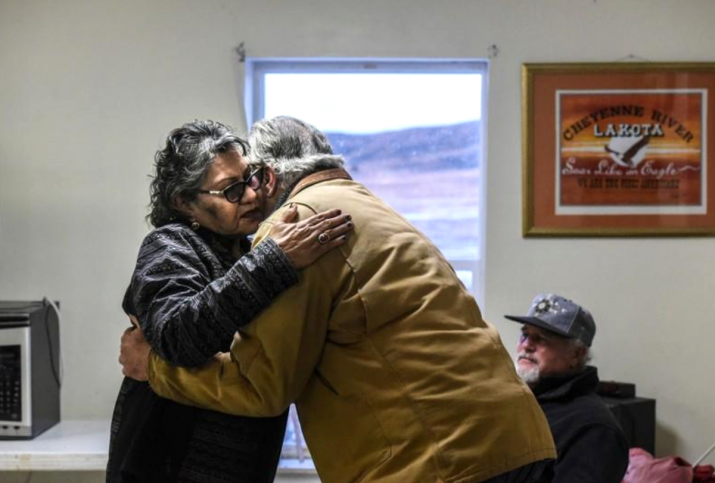
The Buddhist great great grandson of a US military commander who participated in the infamous Wounded Knee Massacre in 1890, one of the most brutal incidents in modern Native American history, recently offered an apology for the atrocity to descendents of the victims.
At an assembly in November on the Cheyenne River Reservation in the US state of South Dakota, Bradley C. Upton, 67, expressed his heartfelt contrition in a formal apology to members of the Lakota Nation for the role of his great great grandfather Col. James W. Forsyth, a senior cavalry officer during the incident, when US soldiers killed more than 250 unarmed Miniconjou and Hunkpapa Lakota men, women, and children.
Upton’s realization and acknowledgment of his family’s connection with the massacre stretches back to his youth when, at the age of 16, he received photographs of the massacre from his great uncle of the Miniconjou Lakota chief Spotted Elk (Lak: Uŋpȟáŋ Glešká) and his family lying frozen on the ground after the massacre. “Rather than comprehend the military duty/actions of my ancestors, I was horrified and filled with shame and incredible sadness,” Upton recalled. (Indianz.Com)
Two years after learning of his family’s history, Upton became a student of the Buddhist teacher Chogyam Trungpa Rinpoche. “I prayed for the next 50 years for forgiveness and healing for all of the people involved, but particularly because my ancestors caused this massacre,” he said. “I felt incredible heaviness.” (Reuters)
Upton, a professional musician from Colorado, said that he and his family members had been praying in both the Buddhist and Christian traditions for years asking for healing, not only for the Lakota Nation but for his family’s karmic debt from his ancestor’s leading role in the tragic events.
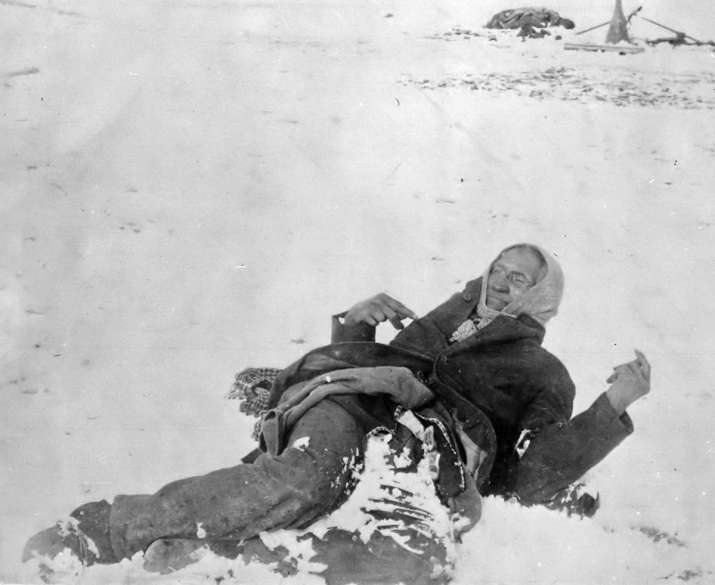
The Wounded Knee Massacre took place on the Lakota Pine Ridge Indian Reservation in South Dakota on 29 December 1890. On 28 December, a detachment of the 7th Cavalry Regiment led by Maj. Samuel M. Whitside intercepted a group of Miniconjou Lakota and 38 Hunkpapa Lakota and escorted them to Wounded Knee Creek (Lak: Čhaŋkpé Ópi Wakpála), where they made camp. Later, the remainder of the 7th Cavalry, led by Col. Forsyth, arrived and surrounded the encampment.
On the morning of 29 December, troops entered the camp to disarm the Lakota. During the exercise, a scuffle erupted and a shot was fired, which resulted in 7th Cavalry personnel opening fire indiscriminately from all sides. The few Lakota warriors who still held weapons returned fire but were quickly suppressed. The surviving Lakota fled, but were pursued and many were killed.
In total, at least 150 men, women, and children were killed, with four men, and 47 women and children wounded, some of whom subsequently died from their injuries, however some estimates put the number of Native Americans killed as high as 300. Among military personnel, 25 soldiers were killed and 39 were wounded, six of whom later died from their injuries. Some accounts say that many of the US casualties resulted from friendly fire incidents as much of the action took place at close range in chaotic circumstances.
The episode represented the last major engagement by the US Army to repress the Native American peoples of the Great Plains in the late 19th century, bringing an end to organized resistance to government-enforced reservation life and assimilation with white American culture.
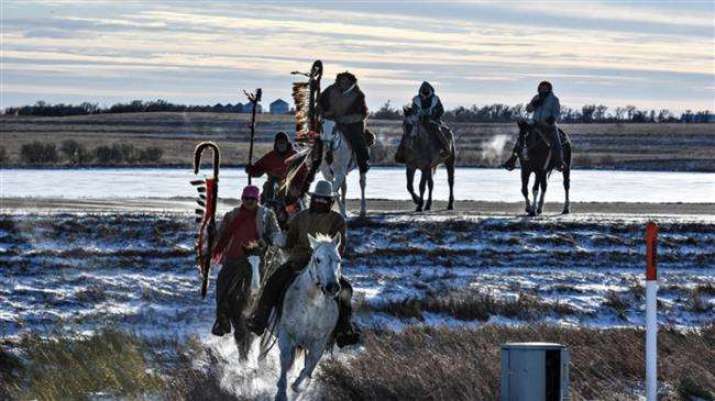
Along with his two sisters, Upton is a fifth-generation descendant of Col. Forsyth and a fourth generation descendant of Brig. Gen. John M. Bacon, who served as a lieutenant under Forsyth during the massacre. Forsyth was subsequently promoted twice, reaching the rank of major general.
A year ago, a friend put Upton in contact with Lakota elder Basil Brave Heart, who had previously worked with similar situations and provided assistance to Upton to participate in a ceremony of healing. “We have observed and experienced vividly in our family histories both past and present, the very dark shadow of the massacre and its karmic effect,” said Upton, who explained that the impact of the massacre had manifested throughout his family tree in the form of alcoholism, abuse, and betrayal. (Native Sun News Today)
Upton observed that deeply profound similarities exist between Buddhism and the beliefs of the Lakota people, who pray for “all my relations,” noting: “All of us have always been completely related. We have always been family, every being in the world has always been related from the beginning of time.” (Reuters)
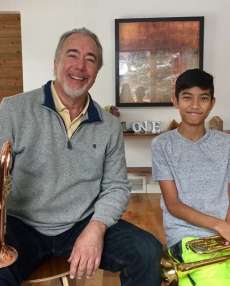
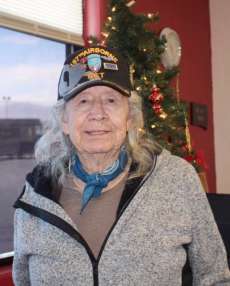
“The Tibetan Buddhist practices that my teacher, Chogyam Trungpa Rinpoche, taught us were based upon enlightened feminine wisdom,” Upton wrote in a newspaper piece following the November gathering. “Basil Brave Heart’s grandmother’s teaching to him on forgiveness, that he gave to me and others is based upon divine feminine wisdom. I experienced this feminine wisdom principle quite vividly during my visit to Eagle Butte and Bridger, not only from women of all ages in your community, but also in the humility, strength, and confidence in the men. I want you to know how unique and deeply moving this was for me. It gives me inspiration beyond words.” (West River Eagle)
During the event on 6 November, Lakota Nation teacher and spiritual advisor Emanuel Red Bear told the assembled descendants that Upton’s apology was deserved. “Only one man had a conscience enough to come here to ask for forgiveness for what his great grandpa did,” Red Bear said. “There needs to be more.” (Reuters)
Upton described the Lakota as “extraordinary people. They are so wise and beautiful,” adding that their acceptance of his apology had left a positive impression on him. “The response has been unbelievable . . . very positive and very touching,” an emotional Upton told the Reuters news agency. “Love is divine and forgiveness is divine.” (PressTV, Reuters)
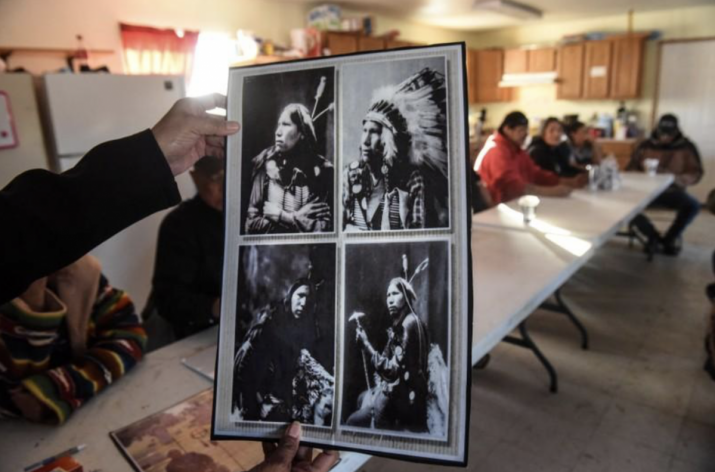
See more
An Apology for Wounded Knee (Native Sun News Today)
Great-great-grandson of Wounded Knee commander asks for forgiveness (Reuters)
Grandson of Wounded Knee Commander visits Cheyenne River (West River Eagle)
GUEST COLUMN: Part II of Brad Upton’s visit: Rescind the medals (West River Eagle)
Descendant of perpetrator of Wounded Knee Massacre apologizes to Native Americans (PressTV)
Descendant of Wounded Knee commander seeks forgiveness (The Guam Daily Post)














